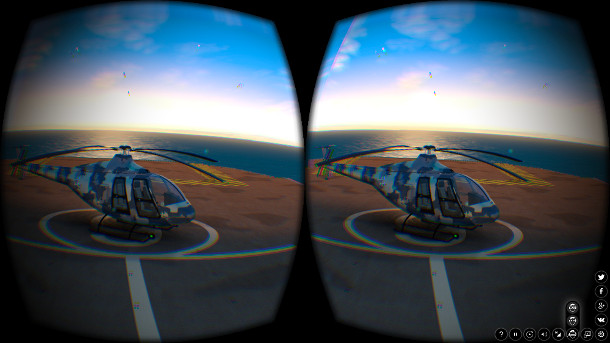Triumph releases Blend4Web 15.12
Triumph has released Blend4Web 15.12, the latest update to its increasingly popular framework for converting Blender scenes into interactive web apps, adding experimental support for VR displays like the Oculus Rift.
Blend4Web: a primer
While Blend4Web has been available since 2014, this is, amazingly, the first time we’ve written about it on CG Channel, so let’s start with a quick description of what it actually does.
Although Triumph describes it simply as a platform for authoring interactive 3D web content, the main component is a Blender add-on, along with supporting tools for optimising and debugging its output.
The system enables Blender users to export scenes in HTML format, for viewing in any WebGL-capable browser. As well as animated geometry, the export process supports Blender’s physics and positional audio.
The content can be made interactive either through scripting interactions directly using JavaScript, or by using the Logic Editor: Blend4Web’s built-in node-based visual programming environment.
You can read a more detailed description of the workflow in Blend4Web’s online documentation, and see examples of the kind of web apps that Blend4Web can create in Triumph’s online gallery.
Used by organisations including NASA
Although Blend4Web is available for free, its GPL licence obliges users to share the source files of apps they create with it, meaning that most professional users opt to buy a closed-source commercial licence instead.
The latter was recently used by NASA’s Jet Propulsion Laboratory to create its Experience Curiosity web app, which celebrates the three-year anniversary of the landing of its Curiosity rover on Mars.
As well as high-profile clients like NASA, an increasing number of professional Blender users are incorporating the platform into their pipelines as a standard way of presenting content to clients.
New in Blend4Web 15.12: VR capabilities, support for multiple light sources
New features in the latest update include support for virtual reality displays using the experimental WebVR JavaScript API: at the minute, the only device specifically named on the Blend4Web site is the Oculus Rift.
Blend4Web 15.12 can also now render shadows from up to four light sources in a scene, further improving the visual quality of its output, which is already fairly sophisticated for WebGL content.
In addition, a new Viewport Alignment tool enables users to create UI elements for apps that automatically attach to the centre or sides of the screen, and resize automatically with the browser window.
You can read a full list of the other changes, which include new nodes for the Logic Editor, via the link below.
Pricing and availability
Blend4Web 15.12 is available now. It should work with Windows, Linux and Mac OS X builds of Blender.
The software is available for free under an open-source GPL licence, or as a commercial Pro licence, which costs $990 per individual developer. Triumph also offers commercial tech support for Pro licence holders.
Read a full list of new features in Blend4Web 15.12 on Triumph’s blog

